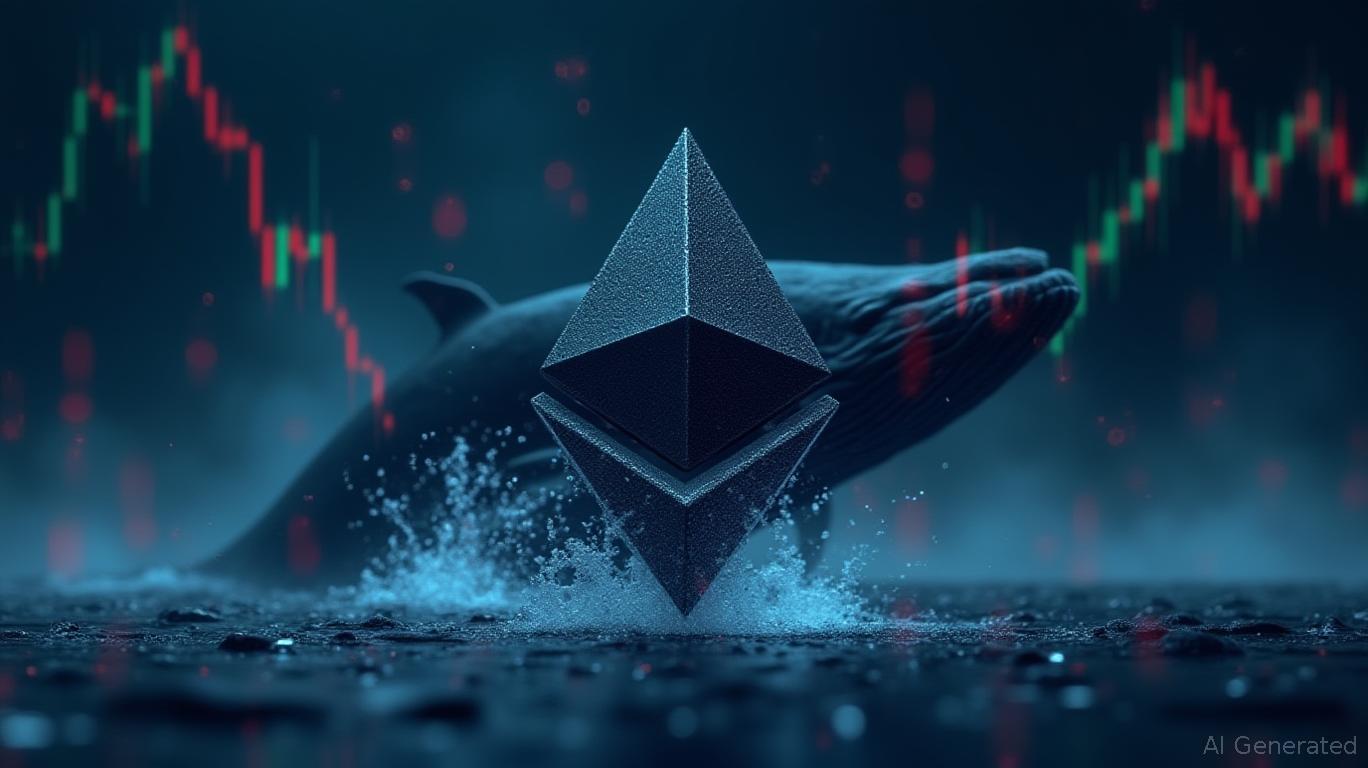Micron's Withdrawal from China's Server Market Signals a Larger Tech Movement Toward AI and More Profitable Industries
- Micron halts server chip sales to China's data centers amid 2023 Beijing ban, shifting focus to global clients and high-margin sectors like automotive and AI. - Strategic pivot reflects broader U.S. tech challenges in China's regulatory environment, with SAS and IBM also scaling back operations due to geopolitical tensions. - Micron advances 1-gamma DRAM and 192GB AI modules, leveraging technological edge to compete in AI-driven markets despite China exit. - Industry shifts toward AI Supercycle and local
Micron Technology Inc. (NASDAQ: MU) has halted the supply of server chips to Chinese data centers, signaling a strategic withdrawal from a market it struggled to access after Beijing's 2023 ban. Announced on October 17, this move highlights the company's challenges in leveraging China's booming data center industry, despite being a global leader in memory and storage, according to a
This decision illustrates the broader difficulties faced by American technology companies operating under China's regulatory environment. Earlier this year, SAS Institute Inc., a major software company, left China after 25 years and cut around 400 jobs, as reported by a

At the same time, Micron's management has expressed confidence in its technological strengths. The company recently reached mature yields for its 1-gamma DRAM node, which delivers a 30% boost in bits per wafer and reduces cost per bit, as highlighted in
The semiconductor sector's ongoing shift into an "AI Supercycle" provides further context for Micron's approach, as explored in
Experts point out that Micron's withdrawal from China's server chip market is more of a strategic adjustment than a full exit. By focusing on customers with international operations and leveraging its technological advantages, Micron aims to reinforce its standing in AI and cloud computing. Nevertheless, the move underscores the delicate nature of U.S.-China tech relations, as ongoing geopolitical tensions and export restrictions continue to reshape global supply chains. As the industry moves toward more localized manufacturing and advanced packaging, Micron's ability to adapt will be vital for its future success.
Disclaimer: The content of this article solely reflects the author's opinion and does not represent the platform in any capacity. This article is not intended to serve as a reference for making investment decisions.
You may also like
Democratizing Blockchain Profits: Mevolaxy’s Application Facilitates $3.6 Million in Distributions
- Mevolaxy, a U.S. mevstake platform, launched a mobile app and reported $3.6M in Q3 payouts, surpassing its previous record. - Its Mevstake system democratizes MEV strategies by pooling liquidity, offering fee-free staking with reduced market risk through locked terms. - The app emphasizes real-time tracking and user-friendly design, aligning with the platform's mission to make blockchain earnings accessible to all users. - Backed by experienced blockchain engineers and DeFi specialists, Mevolaxy's growth

Ethereum Updates Today: Large Holders Increase Holdings, Offsetting Ethereum's $3,400 Liquidation Risk
- Ethereum faces $3,400 liquidation risks amid $3,600 breakout threats, with $807M short and $564M long liquidations at key levels. - Institutional accumulation (82,000 ETH by BitMine) and whale treasury holdings counter short-term weakness, while U.S. outflows contrast Asian inflows. - Layer-2 platforms maintain $20B TVL despite price declines, and projects like Remittix secure $27.8M to capitalize on market recovery. - Analysts project $4,000-$4,500 medium-term recovery if macroeconomic clarity and stabl

Community First, Not Investors: UnifAI's Tokenomics Redefine DeFi Standards
- UnifAI introduces a tokenomics model allocating 13.33% to community/ecosystem, challenging DeFi norms prioritizing investors. - This contrasts traditional models, emphasizing decentralized governance and user-driven growth through staking, voting, and revenue sharing. - 7% liquidity allocation and 20.75% foundation funds ensure stability, while 15% team incentives align long-term success with stakeholders. - Analysts highlight the 13.33% community focus as a strategic differentiator, mirroring institutio

Ethereum News Update: ISO 20022 Connects Blockchain with Banking Sector, Unlocking $100 Trillion Market
- UBS and Chainlink executed first onchain tokenized fund redemption using ISO 20022 standards, bridging blockchain and traditional finance. - The pilot with Swift enabled standardized subscriptions/redemptions, streamlining RWA settlements without custom integrations. - Tokenized U.S. Treasuries now value $8.6B, with institutions like BlackRock and Deribit adopting them as collateral despite liquidity challenges. - Ethereum dominates 75% of tokenized RWAs and 60% of stablecoins, with Standard Chartered pr
